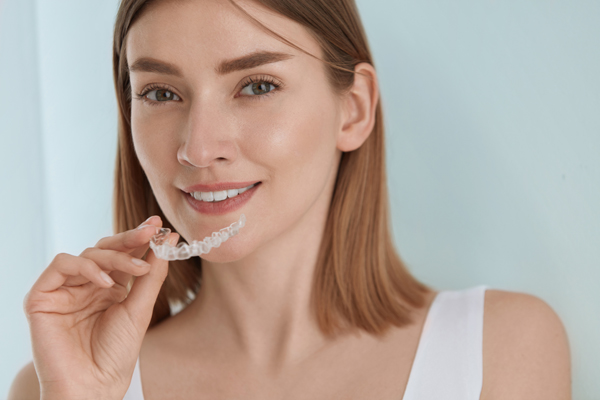5 FAQs About Teeth Straightening With Invisalign®

Considering Invisalign® to correct crooked or crowded teeth? Read on to learn more about this teeth-straightening treatment option. This method for teeth straightening has grown to be quite popular, and with good reason. However, it is still considered relatively new in comparison to traditional metal braces.
5 Things to know about Invisalign®
Outlined below are some of the most frequently asked questions and answers about Invisalign®. Reviewing this information can be quite helpful to individuals who are looking into their teeth-straightening options.
1. How long does Invisalign® therapy take?
The duration of Invisalign therapy varies based on the problem that is being corrected. Those with major crookedness or crowding may need to undergo treatment for a year or two, whereas, more mild cases may only require six to nine months of treatment.
2. What are some of the key differences between Invisalign® and other treatments?
Invisalign is one single piece that goes over the top, bottom, or both arches and it is made of flexible plastic material, whereas braces are made of metal wires and brackets. Invisalign aligners are also removable, allowing for comfortable eating and proper oral hygiene, which cannot be said about traditional metal braces.
3. What is involved in the Invisalign® treatment process?
Invisalign differs from the traditional teeth-straightening method. The technology that is used predicts the shift that will take place at the start of the treatment process. This means that all of the aligners are created and printed at once, and then are switched out throughout the treatment process. Every few weeks, the patient will simply throw away the current aligner and replace it with the next set.
4. Does Invisalign® only straighten teeth?
No. When Invisalign first came out, the technology was only set up to straighten crooked or crowding teeth and on very mild levels. However, over the years, and as the technology has improved, orthodontists have become able to offer this treatment to those who have other orthodontic issues, such as moderate crowding or crookedness. Additionally, those who have minor to moderate bite issues can often also benefit from Invisalign.
5. Is Invisalign® more expensive than other treatments?
Traditionally, yes, Invisalign tends to be pricier than alternative options such as metal or even clear braces. Because traditional braces have been around the longest and require the least expensive type of materials, orthodontists tend to recommend them for those who are more budget-focused. Invisalign, in particular, can be pricey because the plastic material and technology used are on the more costly side.
Find out more from an orthodontist
When considering Invisalign®, the best thing to do is consult directly with an orthodontist. These dental specialists can perform thorough evaluations to determine whether or not Invisalign® is the most suitable treatment. In some cases, alternative routes may be more appropriate. Additionally, orthodontists can answer questions and go over any existing concerns. To find out more or to get scheduled for an appointment, reach out to our dental office today.
Request an appointment here: https://orange.citrusgrovesmiles.com or call Citrus Grove Orthodontics at (714) 464-5933 for an appointment in our Orange office.
Check out what others are saying about our dental services on Yelp: Invisalign in Orange, CA.
Related Posts
Invisalign® is a modern teeth-straightening option that serves as an alternative to metal braces. Invisalign eliminates the need for brackets and wires; instead, it uses a series of clear plastic aligners to realign the teeth. Although lots of individuals are aware of the aesthetic advantages of Invisalign, like a straighter smile, there are also health…
Are you considering Invisalign® treatment? Read on to learn about some of the benefits of opting for this teeth-straightening treatment. According to the American Dental Association, teeth straightening is more than just for cosmetic purposes; it may help your overall oral health. While conventional metal braces are still widely used, modern technology has enabled the…
If you have had braces in the past, you may want to try Invisalign® to correct any crooked teeth that shifted back. Read on to learn more. Fortunately, you can receive Invisalign aligners despite having already had braces. Interestingly, those who have to undergo teeth straightening for a second time usually go for Invisalign instead…
Invisalign® allows people to straighten their teeth without needing the metal brackets and wires with conventional braces. Invisalign trays are transparent and almost undetectable on the teeth. However, what exactly are those trays composed of? Continue reading to discover more about how the trays' material and design move your teeth around.Invisalign clear aligners, often known…
